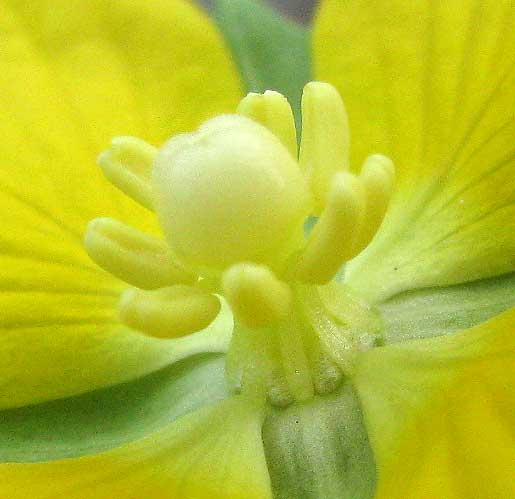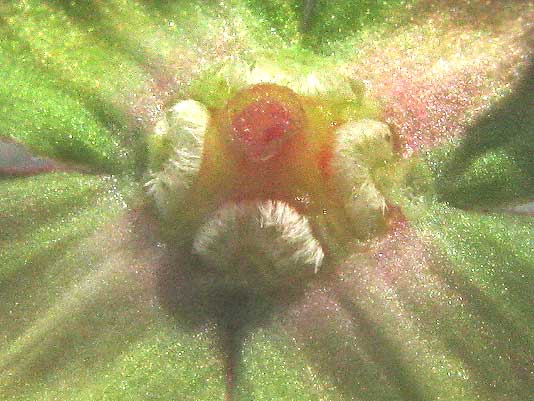Excerpts from Jim Conrad's
Naturalist Newsletter
from the August 18, 2013 Newsletter issued from the Frio Canyon Nature Education Center in the valley of the Dry Frio River in northern Uvalde County, southwestern Texas, on the southern border of the Edwards Plateau; elevation ~1750m (~5750 ft); N29.62°, W99.86°; USA
MEXICAN PRIMROSE-WILLOW
Sometimes you meet a plant that's so at home in its environment that the whole setting seems charmed with harmonious presence and grace. The plant seems to glow in a kind of halo as the community around it sings of the ecosystem's perfection. Most often, such moments are fleeting, maybe lasting only as long as sunlight illuminates the plant just right, or maybe as a nearby bird sings its songs.
I had a flash of that feeling the other day when sunlight penetrated a shadowy spot where the little Dry Frio dribbled over a limestone outcrop and ran between boulders, the water orange with tannin from a nearby marsh. The beam of sunlight illuminated the plant shown below:

A close-up showing a flower, unopened buds, and an already pollinated blossom that has lost its petals is shown below:

In the picture's lower, left corner, note the flower that already has been pollinated, lost its petals, and now bears only green, triangular sepals atop a slender, ribbed, gently arcing ovary. That's an "inferior ovary" because it resides below the sepals, not above them. Most large, simple flowers produce "superior" ovaries above their sepals, so this is a good field mark.
A close-up of the blossom's center reveals more diagnostic features below:

Notice the unusually large, spherical, whitish stigma subtended by eight stamens with their banana-like, pollen-producing anthers atop slender filaments anchored at the style base. Once the flower is pollinated, its petals, style and stigma, and stamens all fall off, leaving the four triangular, green sepals we saw in our first picture, atop the slender ovary. The discarded parts leave interesting scars atop the ovary, as shown below:

Even the leaves and stems of this species are particularly handsome and pleasing to look at, as hinted at by the picture below:

The moment I saw this plant I knew what group, or genus, it belonged to, because in the US Southeast several species of this kind of plant occur, their appearance often suggestive of willow saplings bearing yellow blossoms, and normally living in or close to water. It's the genus Ludwigia, whose species often are known as primrose-willows, water-purslanes, or water-primroses. Primrose-willows belong to the Evening-Primrose Family, the Onagraceae.
About 75 primrose-willow species are known worldwide, with some 31 in North America, and maybe four to be looked for our area. Those four are fairly easy to distinguish. Here, any primrose-willow with slender, willow-like leaves, red stems, and large yellow flowers with four, not five, petals is LUDWIGIA OCTOVALVIS, in books often referred to as the Mexican Primrose-willow.
Despite its Mexican name, this is a remarkably widespread plant, occurring in hot and warm areas nearly worldwide. It's so common in so many places that its original home is uncertain. Judging from the location of species most closely related to it, the best bet is that Mexican Primrose-willow arose in tropical America but then aggressively spread across the planet, probably with the help of humans.
Traditionally Mexican Primrose-willow has been used to treat skin diseases, diarrhea and flatulence. In fact, a 2012 paper by Yakob et al in World Applied Sciences Journal 16 (1): 22-29 suggested the use of Mexican Primrose-willow as an antioxidant as well as a treatment for diseases caused by E. coli.